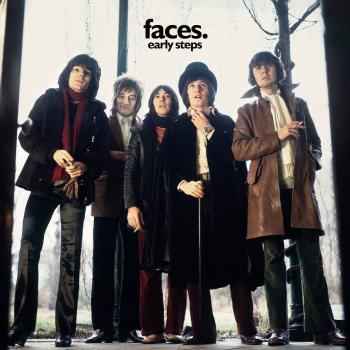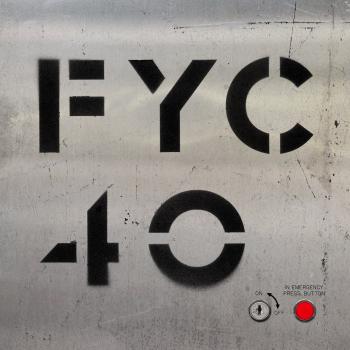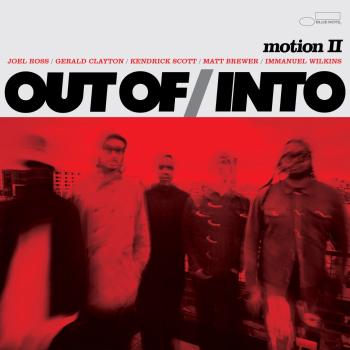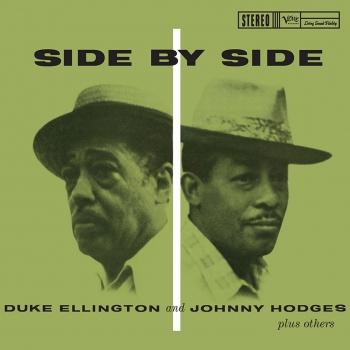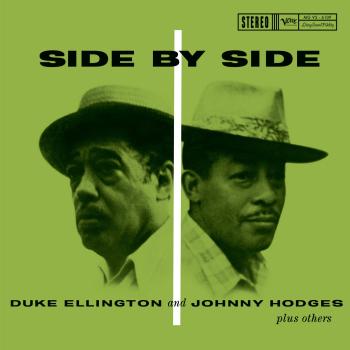
Side By Side (2025 Remaster) Duke Ellington & Johnny Hodges
Album info
Album-Release:
1959
HRA-Release:
18.04.2025
Album including Album cover
I`m sorry!
Dear HIGHRESAUDIO Visitor,
due to territorial constraints and also different releases dates in each country you currently can`t purchase this album. We are updating our release dates twice a week. So, please feel free to check from time-to-time, if the album is available for your country.
We suggest, that you bookmark the album and use our Short List function.
Thank you for your understanding and patience.
Yours sincerely, HIGHRESAUDIO
- 1 Stompy Jones (2025 Remaster) 06:38
- 2 Squeeze Me (2025 Remaster) 04:36
- 3 Big Shoe (2025 Remaster) 05:35
- 4 Going Up (2025 Remaster) 04:51
- 5 Just A Memory (2025 Remaster) 05:52
- 6 Let's Fall In Love (2025 Remaster) 06:45
- 7 Ruint (2025 Remaster) 02:31
- 8 Bend One (2025 Remaster) 02:57
- 9 You Need To Rock (2025 Remaster) 05:51
Info for Side By Side (2025 Remaster)
Neues ReMaster! Die großartigste, swingendste Rhythmusgruppe aller Zeiten! Tolle Bläser!
Dieser Ton des Altsaxophons zwischen Wehmut und Aggressivität, wie ihn nur Einer blasen kann! So könnten einige der Superlative lauten, wenn diese, Ende der fünfziger Jahre aufgenommenen, neun Titel ins Ohr gehen. Das Konzept, die Ellington-Band für Jamsession-artige Titel zu verkleinern und damit noch mehr Platz für Soli zu bieten, geht voll auf. Es sind ja auch Koryphäen erster Ordnung, diese Bläser. Ob Roy Eldridge, der vom Swing bis Be-Bop den Übergang zum modernen Trompetenstil prägte, ob Harry Edison, der seinen leichten, luftigen Basie-Swing nicht verleugnen kann, oder Ben Webster, der beide Swing-Pole in sich vereint: Den Count und den Duke. Und dann ist da noch Johnny Hodges – genannt: the „Rabbit“ –, dessen natürliches Rhythmusgefühl und weicher Ton in diesem Konzept bestens zum Ausdruck kommen.
Squeeze Me und Stompy Jones sind Titel aus dem Repertoire der 40iger Jahre, oft gespielt und meisterhaft neu gestaltet bei dieser Session. Der Standard Let’s Fall In Love führt vor, welch eigenständigen Ton Lawrence Brown auf der Posaune gefunden hat und stellt anschließend Roy Eldridge und Johnny Hodges ins Rampenlicht, wobei beide im Zenit stehend ihr Können beweisen. Ruint und Going Up sind Features für Johnny Hodges und bei Just A Memory steht der sanfte, manchmal etwas sentimentale Ton von Ben Webster im Mittelpunkt. Ebenfalls herausragend ist die Aufnahmequalität dieser Einspielungen, die Neuauflage pünktlich zum 50. Geburtstag der beiden Sessions bietet eine willkommene Gelegenheit, auch den Verve-Toningenieuren ihren Tribut zu zollen.
"Diese Musik atmet wirklich, und sie ist voller Dramatik trotz ihrer Entspanntheit. Hier umgab sich Ellington mit anderen Musikern, um mal außerhalb der Big Band und ihren komplizierten Arrangements der reinen Lust zum Spielen freien Lauf zu lassen. Lockere Jam-Session-Atmosphäre mit brillanten Solisten." (K. Lippegaus in stereo 9 / 86)
Duke Ellington, Klavier
Johnny Hodges, Altsaxophon
Ben Webster, Tenorsaxophon
Roy Eldridge, Trompete
Harry "Sweets" Edison, Trompete
Lawrence Brown, Posaune
Les Spann, Flöte, Gitarre
Billy Strayhorn, Klavier
Al Hall, Bass
Wendell Marshall, Bass
Jo Jones, Schlagzeug
Original sessions produced by Norman Granz.
Tacks 1, 2, and 4 recorded February 20, 1959, Columbia Studios, New York City.
Tracks 3 and 5-9 recorded August 14, 1958 at Nola Studios, New York City.
Digitally remastered
Duke Ellington
called his music 'American Music' rather than jazz, and liked to describe those who impressed him as 'beyond category. He remains one of the most influential figures in jazz, if not in all American music and is widely considered as one of the twentieth century's best known African American personalities. As both a composer and a band leader, Ellington's reputation has increased since his death, with thematic repackaging of his signature music often becoming best-sellers. Posthumous recognition of his work include a special award citation from the Pulitzer Prize Board.
Duke Ellington influenced millions of people both around the world and at home. He gave American music its own sound for the first time. In his fifty year career, he played over 20,000 performances in Europe, Latin America, the Middle East as well as Asia.
Simply put, Ellington transcends boundaries and fills the world with a treasure trove of music that renews itself through every generation of fans and music-lovers. His legacy continues to live onand will endure for generations to come. Winton Marsalis said it best when he said 'His music sounds like America.' Because of the unmatched artistic heights to which he soared, no one deserved the phrase “beyond category” more than Ellington, for it aptly describes his life as well. He was most certainly one of a kind that maintained a lifestyle with universal appeal which transcended countless boundaries.
Duke Ellington is best remembered for the over 3000 songs that he composed during his lifetime. His best known titles include; 'It Don't Mean a Thing if It Ain't Got That Swing', 'Sophisticated Lady', 'Mood Indigo', “Solitude', 'In a Mellotone', and 'Satin Doll'. The most amazing part about Ellington was the most creative while he was on the road. It was during this time when he wrote his most famous piece, 'Mood Indigo'which brought him world wide fame.
Duke Ellington's popular compositions set the bar for generations of brilliant jazz, pop, theatre and soundtrack composers to come. While these compositions guarantee his greatness, what makes Duke an iconoclastic genius, and an unparalleled visionary, what has granted him immortality are his extended suites. From 1943's Black, Brown and Beige to 1972's The Uwis Suite, Duke used the suite format to give his jazz songs a far more empowering meaning, resonance and purpose: to exalt, mythologize and re-contextualize the African-American experience on a grand scale.
Duke Ellington was partial to giving brief verbal accounts of the moods his songs captured. Reading those accounts is like looking deep into the background of an old photo of New York and noticing the lost and almost unaccountable details that gave the city its character during Ellington's heyday, which began in 1927 when his band made the Cotton Club its home. ''The memory of things gone,'' Ellington once said, ''is important to a jazz musician,'' and the stories he sometimes told about his songs are the record of those things gone. But what is gone returns, its pulse kicking, when Ellington's music plays, and never mind what past it is, for the music itself still carries us forward today.
Duke Ellington was awarded the Grammy Lifetime Achievement Award in 1966. He was later awarded several other prizes, the Presidential Medal of Freedom in 1969, and the Legion of Honor by France in 1973, the highest civilian honors in each country. He died of lung cancer and pneumonia on May 24, 1974, a month after his 75th birthday, and is buried in the Bronx, in New York City. At his funeral attended by over 12,000 people at the Cathedral of St. John the Divine, Ella Fitzgerald summed up the occasion, 'It's a very sad day...A genius has passed.'
This album contains no booklet.



